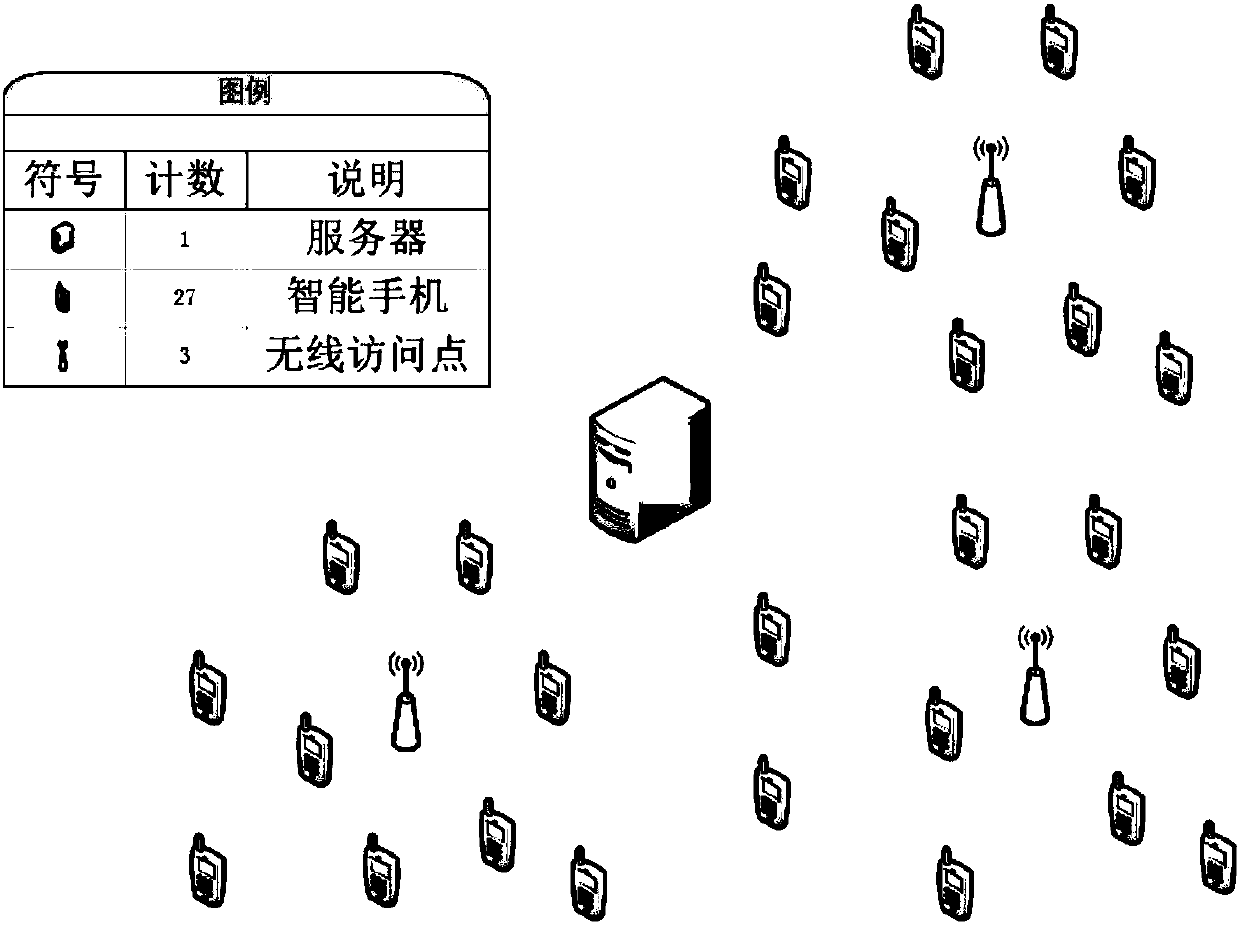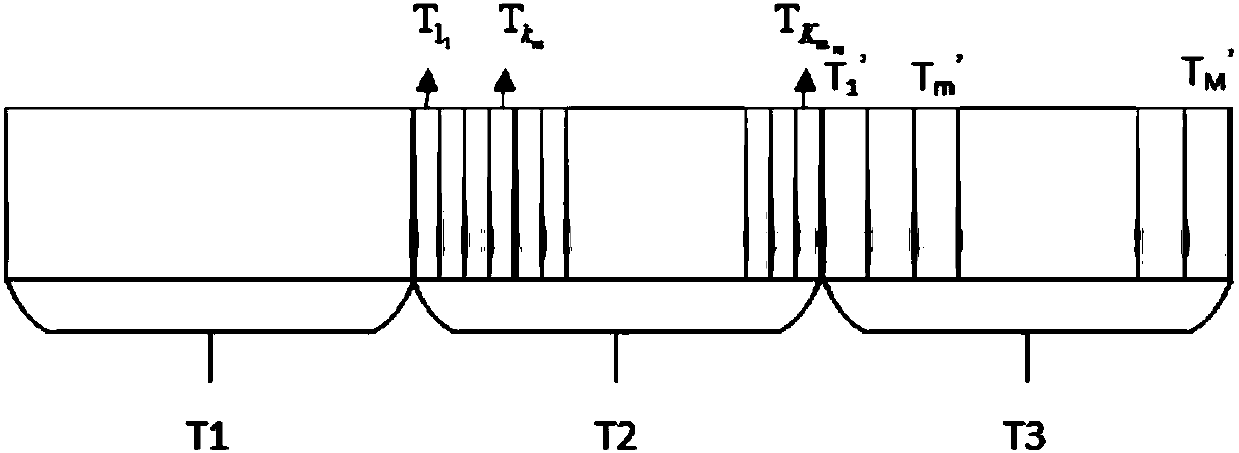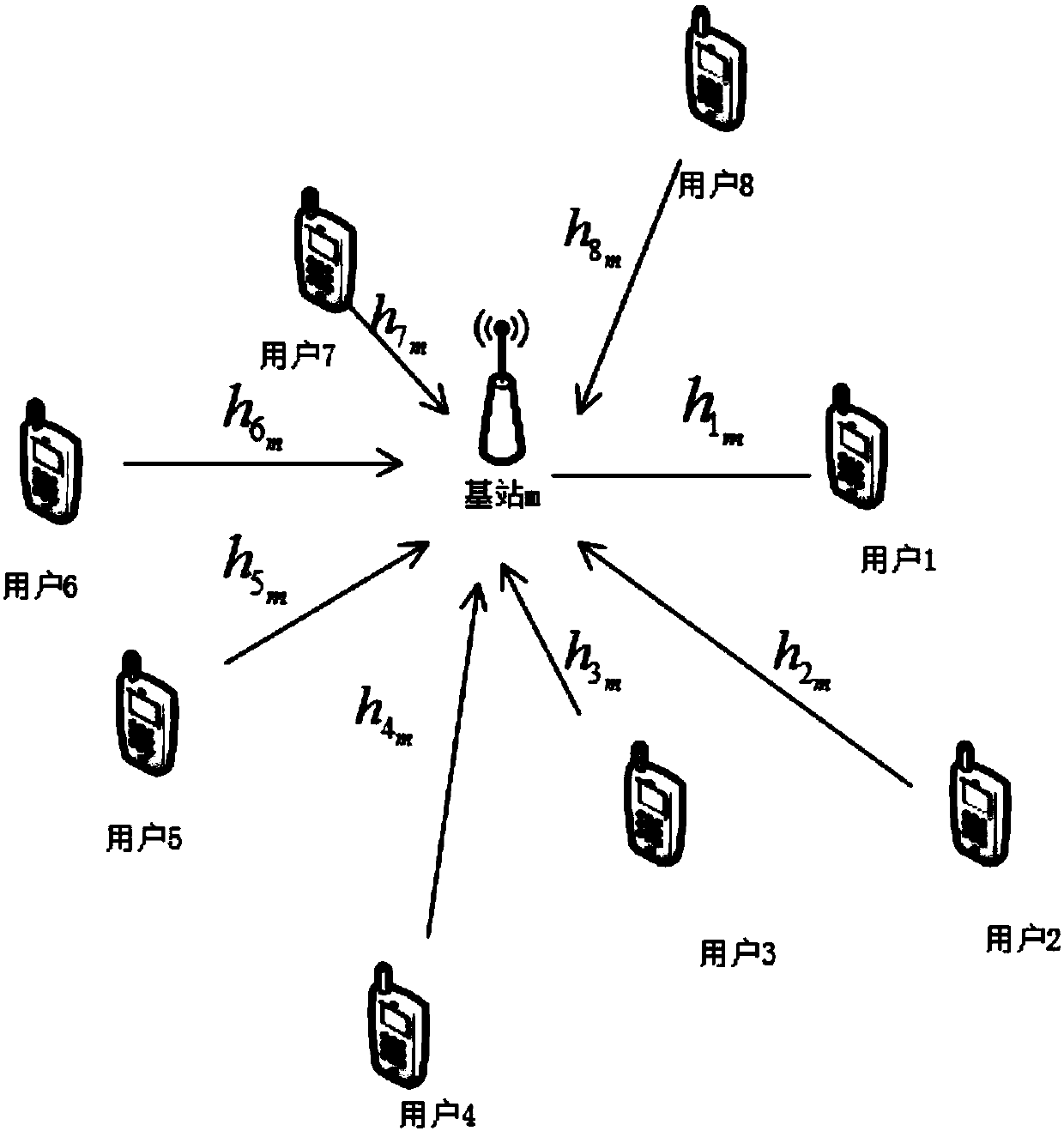Resource allocation method of distributed wireless energy and information transmission system
An information transmission system and wireless energy technology, which is applied in the field of resource allocation of distributed wireless energy and information transmission systems, can solve the problem of wireless energy attenuation, consume more energy, and centralized antenna systems are difficult to meet user speed and energy requirements and other issues, to achieve the effect that is conducive to the implementation and reduces the complexity of the implementation
- Summary
- Abstract
- Description
- Claims
- Application Information
AI Technical Summary
Problems solved by technology
Method used
Image
Examples
Embodiment Construction
[0043] Such as figure 1 As shown, the system we consider includes 1 computing center, M RRHs, and S subscriber units. In order to solve the problem of "double near-far effect" in the wireless energy and information transmission system, the present invention adopts a distributed antenna system structure in the wireless energy and information transmission system. Distributed antenna systems are considered to be a key technology for future mobile communications. In the present invention, a plurality of RRHs are distributed in a larger range, and all RRHs are connected to the computing center in a wireless manner. Compared with the wired connection method, the wireless method can avoid the cost of laying optical fiber or coaxial cable, thereby reducing costs and increasing practicability. Compared with the traditional centralized antenna system, the distributed antenna system can make the RRHs as close as possible to the wireless user terminals, thus improving the energy transfe...
PUM
 Login to View More
Login to View More Abstract
Description
Claims
Application Information
 Login to View More
Login to View More - R&D
- Intellectual Property
- Life Sciences
- Materials
- Tech Scout
- Unparalleled Data Quality
- Higher Quality Content
- 60% Fewer Hallucinations
Browse by: Latest US Patents, China's latest patents, Technical Efficacy Thesaurus, Application Domain, Technology Topic, Popular Technical Reports.
© 2025 PatSnap. All rights reserved.Legal|Privacy policy|Modern Slavery Act Transparency Statement|Sitemap|About US| Contact US: help@patsnap.com



